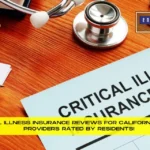Table of Contents
Introduction
Navigating through the maze of homeowners insurance can be as daunting as buying the home itself. But fear not! Understanding the different “Types Of Homeowners Insurance In US” is your first step towards safeguarding your most valuable asset. Whether you’re a first-time buyer or pondering an upgrade to your current policy, it’s essential to know which coverage suits your needs best. In this guide, we’ll walk you through the 7 key types of homeowners insurance, helping you unlock the mystery behind each policy. Get ready to demystify insurance jargon and tailor the perfect shield for your home.
HO-1: Basic Form Homeowner Policy
Starting off with the HO-1, the Basic Form Homeowner Policy is your entry-level safeguard. It’s the minimalist’s choice, covering only the very basics like fire, lightning, and a few other types of natural disasters. Think of it as your home’s basic armor against the unexpected, albeit with limited coverage. While it’s not as comprehensive as other policies, it’s a starting point for those on a tight budget or with homes that might not qualify for broader coverage.
HO-2: Broad Form Homeowner Policy
Taking a step up, the HO-2, or Broad Form Homeowner Policy, expands on the basics. It covers everything the HO-1 does and more, including the likes of falling objects and weight of ice or snow. This policy is for those who seek a bit more peace of mind, knowing that their home is protected against a wider array of mishaps. It’s a middle-ground option that balances cost with coverage, suitable for the average homeowner who wants to sleep a little easier at night.
HO-3: Special Form Homeowner Policy
The HO-3, or Special Form Homeowner Policy, is where coverage gets broader and more inclusive. This is the most popular homeowners insurance policy in the US, offering an all-risk coverage for your home. This means it covers all perils, except those explicitly excluded in the policy (such as earthquakes and floods). It’s ideal for those wanting comprehensive protection without having to worry about the nitty-gritty details of what’s covered and what’s not. If you’re looking for a “set it and forget it” type of policy, the HO-3 might just be your best bet.
HO-4: Renters Insurance
Not to be overlooked, the HO-4 policy, commonly known as Renters Insurance, is designed for those who lease rather than own. This coverage protects your personal property within the rented space, offering peace of mind to tenants everywhere. It’s a crucial investment for renters, covering losses from theft, fire, and even liability claims. If you’re renting, the HO-4 ensures that your belongings are protected, making it an essential part of your rental agreement.
HO-5: Comprehensive Form Homeowner Policy
For those who demand the ultimate in home protection, the HO-5, or Comprehensive Form Homeowner Policy, offers the broadest coverage. It not only includes all the benefits of the HO-3 but also extends coverage to personal property with an open peril policy, meaning unless something is explicitly excluded, it’s covered. This policy is perfect for the homeowner with high-value items or someone who wants the peace of mind that comes with knowing their home and belongings are thoroughly protected against almost any disaster.
HO-6: Condo Insurance
For condo owners, the HO-6 policy, or Condo Insurance, fills in the gaps left by your condo association’s master policy. It covers personal property, liability, and parts of the unit not covered by the association’s policy, such as improvements or personal liability. If you own a condo, this policy ensures that your investment is protected, covering everything from your kitchen cabinets to your personal belongings.
HO-8: Older Homes Insurance
Lastly, the HO-8 policy caters to the unique needs of older, historic homes. These homes might not meet the stringent requirements of other policies due to their age or value. The HO-8 offers a safety net, ensuring that owners of these charming
but potentially fragile properties are not left out in the cold. It typically covers repair or replacement costs using materials that are similar in function but not necessarily in historical value or authenticity. This policy is a boon for those who’ve taken on the stewardship of a piece of history, providing protection while acknowledging the unique characteristics of older homes.
Conclusion
Choosing the right type of homeowners insurance in the US can seem overwhelming, but it’s all about understanding your needs and matching them with the right policy. Whether you’re just starting out with a basic HO-1 policy or seeking the comprehensive coverage of an HO-5, there’s an option out there that’s suited to your situation. Remember, your home is more than just a building; it’s where life happens, memories are made, and safety is paramount. Investing in the right insurance policy ensures that no matter what life throws your way, you and your home are prepared to face it head-on. Now that you’re armed with knowledge about the different types of homeowners insurance in the US, you’re better equipped to make an informed decision that ensures peace of mind for you and protection for your home.
Frequently Asked Questions
01. What’s the main difference between HO-3 and HO-5 policies?
The main difference lies in the breadth of coverage. While both offer comprehensive protection for your home, the HO-5 policy also includes open peril coverage for personal property, meaning it covers all perils unless explicitly excluded. This makes HO-5 the more extensive option, suitable for those with high-value personal property.
02. Is flood insurance included in standard homeowners policies?
No, flood insurance is not included in standard homeowners policies, such as the HO-3 or HO-5. Homeowners who live in flood-prone areas should consider purchasing a separate flood insurance policy to ensure full protection against water damage.
03. Can I get homeowners insurance if I own a very old home?
Yes, homeowners of older homes can get insurance through the HO-8 policy, specifically designed to meet the needs of older, historic homes. It provides coverage for repair or replacement costs using materials that are similar in function, even if not identical in historical value.
04. How does renters insurance (HO-4) protect me?
Renters insurance protects your personal property in the event of damage or theft and provides liability coverage if someone is injured in your rented space. It’s an essential policy for renters, ensuring that your belongings and personal liability are covered.
05. Should condo owners get both HO-6 and the condo association’s master policy?
Yes, condo owners should have both an individual HO-6 policy and be covered by the condo association’s master policy. The master policy generally covers the building and common areas, while the HO-6 policy covers personal property, liability, and parts of the unit that the master policy does not, such as improvements.











